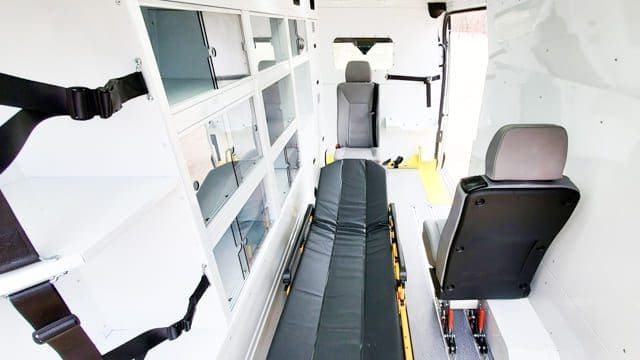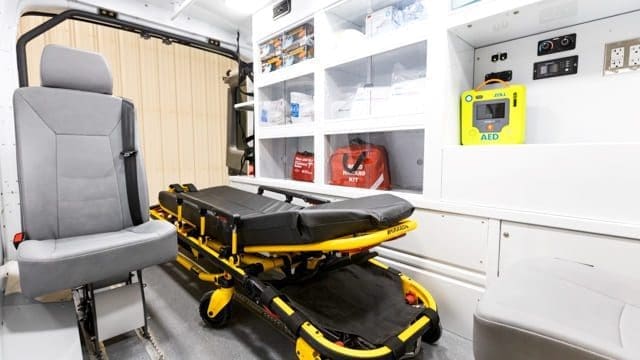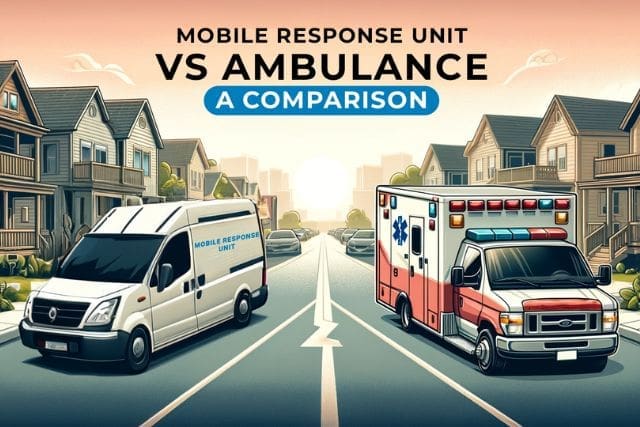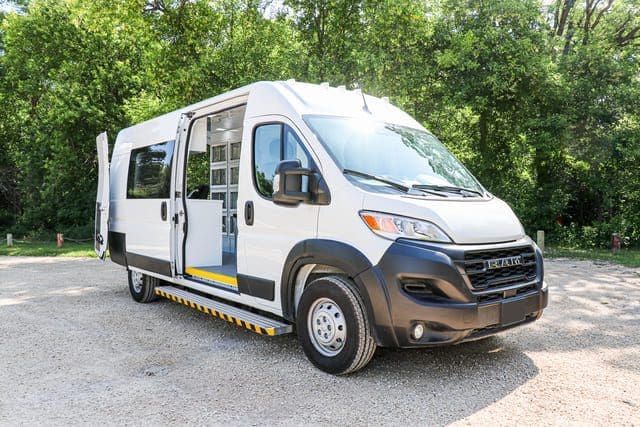Is your organization having trouble finding a non-emergency patient transfer vehicle to provide services in? Maybe you’ve looked into an ambulance, but that seemed like a little overboard for what services your organization offers. Suppose your patients have been relying on emergency medical services for low-risk medical needs, and you’re looking for alternative options. In that case, a mobile response unit might be your answer.
At AVAN Mobility, we don’t like things being any more complicated than they need to be. We’ve been manufacturing mobile medical vehicles for over 10 years, and one of our goals is to answer our customers’ questions before they’re even asked. If your organization finds itself in the predicament above, you’ll want to keep reading.
Some of the questions that we aim to answer in this article include:
- What are the typical uses for mobile response units and ambulances?
- Which audience does each option cater to?
- What is the price associated with each option?
- What are the specific rules and regulations you must adhere to while utilizing each option?
Mobile response unit vs. ambulance
Mobile response units and ambulances serve different purposes in patient transportation. Let’s take a look at how they differ:
Mobile response unit
What it does: A mobile response unit helps with non-urgent patient transportation. It makes non-emergency patient trips easier.
When to use it: Mobile response units are useful for moving patients between hospitals when it’s not an emergency, taking someone to a regular medical appointment, or getting to and from dialysis appointments when it’s not an emergency.
Imagine your grandma lives in a cozy retirement home, and she’s scheduled for a routine check-up at her doctor’s office. She’s perfectly fine, but she needs some assistance with getting there.
In this case, a mobile response unit would be the perfect solution. It arrives at her retirement home, has a comfortable stretcher for her to lie on, and she’s gently transported to the doctor’s office. It’s like a smooth ride with a caring friend, designed for non-emergencies.
What’s inside: Inside a mobile response unit, like the one we manufacture at AVAN Mobility, you’ll find stretcher securements, medical equipment, attendant seating, storage, and power sources.
It’s important to know that a mobile response unit is not an ambulance. It doesn’t have the advanced equipment needed for critical situations or life-saving care.
Ambulance
What it does: Ambulances are all about emergency care. They have special life support devices to help people in life-threatening situations. They are essential for the mobile medical response team and patients who are at the scene of emergencies.
When to use it: Ambulances are for times when someone’s health is in big trouble and they need help right away. They come with flashing lights and sirens, and they have advanced medical gear for serious medical conditions.
Now, picture your neighbor, John, who’s an adventurous cyclist. Today, he had a bit of a tumble and hit his head pretty hard. He’s unconscious, and you’re worried. This is the moment when you call 911, and an ambulance rushes to the scene with sirens blaring.
They have all the high-tech equipment, like defibrillators and ventilators, ready to provide life-saving care on the spot. John’s situation is serious, and he needs that ambulance to get him to the hospital as quickly as possible because every second counts.
What’s inside: Ambulances have everything needed for serious emergencies, like a defibrillator, oxygen delivery systems, power supplies, and other equipment for critical situations.
To recap, a mobile response unit is great for non-urgent patient trips, making things easy for those who don’t need immediate medical help. Ambulances are for emergencies and are fully equipped to provide life-saving care during serious situations. Choosing the right option depends on how sick the patient is and how quickly they need help.
How do mobile response units reduce the strain on emergency services?

The time it takes for emergency medical services (EMS) to arrive ranges between 7 and 14 minutes. This number seems to be steadily increasing. Why? Because there aren’t enough paramedics and ambulances. The system is feeling the pressure.
But here’s the good news—mobile response units can make a big difference. They’re not just vehicles for moving patients; they can also serve as mobile medical treatment centers.
A mobile response unit can help before the official emergency team arrives. They have basic medical tools, and the staff on board can treat injuries or conditions that aren’t life-threatening but still need attention.
Mobile response units help relieve the burden on overworked EMS services by helping out with emergencies. This allows EMS to focus on more serious and critical cases when people need immediate, life-saving care.
So, as we deal with longer wait times due to a lack of EMS staff, mobile response units are here to lend a hand. They make sure everyone gets the care they need, especially when it’s not a life-or-death situation.
Cost of a mobile response unit vs. ambulance
Let’s break down the costs of a Mobile Response Van vs. an ambulance.
Mobile Response Van: The price range of the Mobile Response Van typically ranges between $125,000 to $225,000.
Box-style ambulance: The average box-style ambulance costs around $160,000 and can range up to $305,000 with all of the equipment.
Regulations of mobile response units vs. ambulances
There are a variety of differences between the regulations of mobile response units and ambulances.
Mobile response units
You don’t need a special license or specific equipment when you use a Mobile Response Van. That’s because this van isn’t meant for emergency health situations. But remember, it’s a good idea to check your state’s rules for licensing, just to be sure.
Ambulances
The Emergency Medical Services (EMS) System Act lays out how EMS should work. It’s a set of rules that apply at both the federal and state levels. Think of it as a guidebook for EMS providers.
Occupational Safety and Health Administration (OSHA) regulations: These focus on keeping workers and workplaces safe. They have specific standards, like those for handling germs in blood and using masks to protect breathing.
The Health Insurance Portability and Accountability Act (HIPAA): This is all about keeping patient info private and secure. Ambulance services must follow HIPAA rules closely.
Federal Motor Vehicle Safety Standards (FMVSS): These set safety rules for ambulances. The National Highway Traffic Safety Administration (NHTSA) makes sure these rules are followed.
The Americans with Disabilities Act (ADA): This ensures accessibility and fairness for everyone. This law makes sure ambulances are accessible and that no one faces discrimination.
The Controlled Substances Act: This act sets rules for storing and using certain medications often used in ambulances.
State laws: Each state has its own rules. They have agencies that give licenses to ambulance services. These agencies also have their own rules to follow.
Which option is best for your organization?
If your organization’s main focus is on non-urgent medical needs and transportation, then a Mobile Response Unit is the way to go. These units are specially designed to cater to non-emergent situations, making them an excellent choice for patients who don’t require immediate medical attention.
In contrast, if your organization serves people who are facing life-threatening emergencies, an ambulance is the right choice. Ambulances are equipped with advanced medical tools and life-saving equipment to address critical situations.
Your next steps with AVAN Mobility

You found this article looking for more information on mobile response units and how they differ from ambulances.
You learned that mobile response units are more suitable for non-urgent care, while ambulances are better for serious emergency situations.
If you’re still having trouble deciding if a mobile response unit is the right fit for your organization, talk to an expert today.
Read our article on Mobile Response Vans for a little more information on what they’re all about.
If you’ve learned enough from this article and are ready to make your decision, you should read our article on the top 6 ways to apply for grants. This will potentially help you get the funding you need to get started in the right direction.





